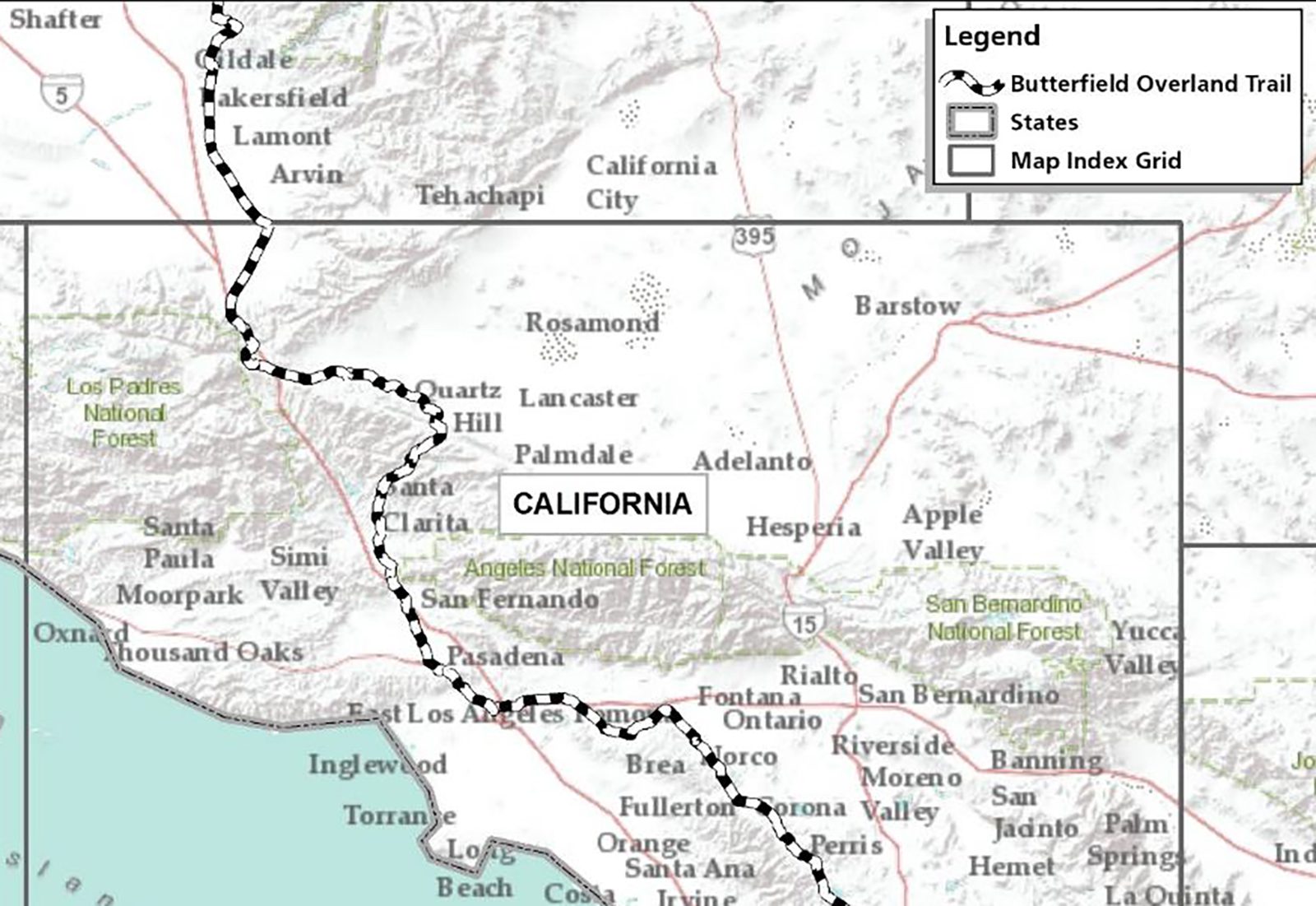There’s a newly designated National Historic Trail that runs right through the heart of Santa Clarita.
Sponsored by Sen. John Boozman, R-Arkansas, the “Butterfield Overland National Historic Trail” came into existence Thursday with President Biden’s signature. The bill memorializes the full 3,292-mile route of John Butterfield’s Overland Mail Company that carried mail and passengers from St. Louis and Memphis to San Francisco from 1858-1861. It’s known as the “ox-bow route” because of the way it dipped through the Southern states of Missouri, Tennessee, Arkansas, Oklahoma, Texas, and New Mexico Territory, which included Arizona.
Locally, horse-drawn Overland Mail wagons would enter the Santa Clarita Valley from the south through the Newhall Pass by way of Beale’s Cut – which wasn’t yet called Beale’s Cut and hadn’t been completed to its eventual 90-foot depth. From there, the route continued approximately up today’s Newhall Avenue-Railroad-Bouquet Canyon Road, out Seco Canyon and up San Francisquito Canyon to Elizabeth Lake and beyond. Stagecoach stations were located at today’s Eternal Valley Cemetery, lower San Francisquito Canyon, upper San Francisquito Canyon, today’s Neenach and Gorman, and Fort Tejon.
With the designation, a National Trail now runs through a local National Monument, namely the St. Francis Dam Disaster site.
“This newly designated National Historic Trail once again demonstrates the wealth of history that occurred in this valley and San Francisquito Canyon,” said Alan Pollack, president of the Santa Clarita Valley Historical Society. “The St. Francis Dam site now becomes an important stop along a famous trail which runs from St. Louis and Memphis, through to Los Angeles and San Francisco.”
Pollack, who also heads the St. Francis Dam National Memorial Foundation, said it is “all the more vital that the U.S. Forest Service expedite its plans to develop the St. Francis Dam Disaster National Memorial and Monument with which Southern California and our valley were gifted by Congress in 2019. Soon, people from all over the country will be able to learn about both the Butterfield mail route and our tragedy which occurred in 1928.”
A 2018 National Park Service study found the Butterfield Trail to be “significant, feasible, suitable, and desirable for designation as a national historic trail.” The NPS report states, “The trail is nationally significant in American history because it represents a great idea or ideal of the American people. … The trail is associated with events that have made a significant contribution to the broad national patterns of American history because the route fulfilled a critical need to tie disparate parts of the country together and satisfied the need to have an overland route that ran entirely within the continent’s borders.”
The Overland Mail and its Northern rival, the Pony Express, came to an end with the Civil War and the advent of the telegraph. According to Butterfield Trail historian Gerald T. Ahnert, the Overland would be rerouted and consolidated in 1866 into Wells, Fargo & Co., carrying mail and passengers until the completion of the transcontinental railroad in 1869.
While the new legislation acquires no land for the federal government and provides no funding for route markers or other physical memorialization, the NPS study states that it could happen in the future: “If a national historic trail were designated, a comprehensive plan would be prepared and would propose specific areas to be developed adjacent to the trails” for historical interpretation.
Pollack added: “I hope property owners in our area along the new Historic Trail will take the initiative to mark it in some way so that our incredible history becomes evident to visitors from all over the country and globe.”

Like this:
Like Loading...
Related





 Tweet This
Tweet This Facebook
Facebook Digg This
Digg This Bookmark
Bookmark Stumble
Stumble RSS
RSS



























REAL NAMES ONLY: All posters must use their real individual or business name. This applies equally to Twitter account holders who use a nickname.
0 Comments
You can be the first one to leave a comment.